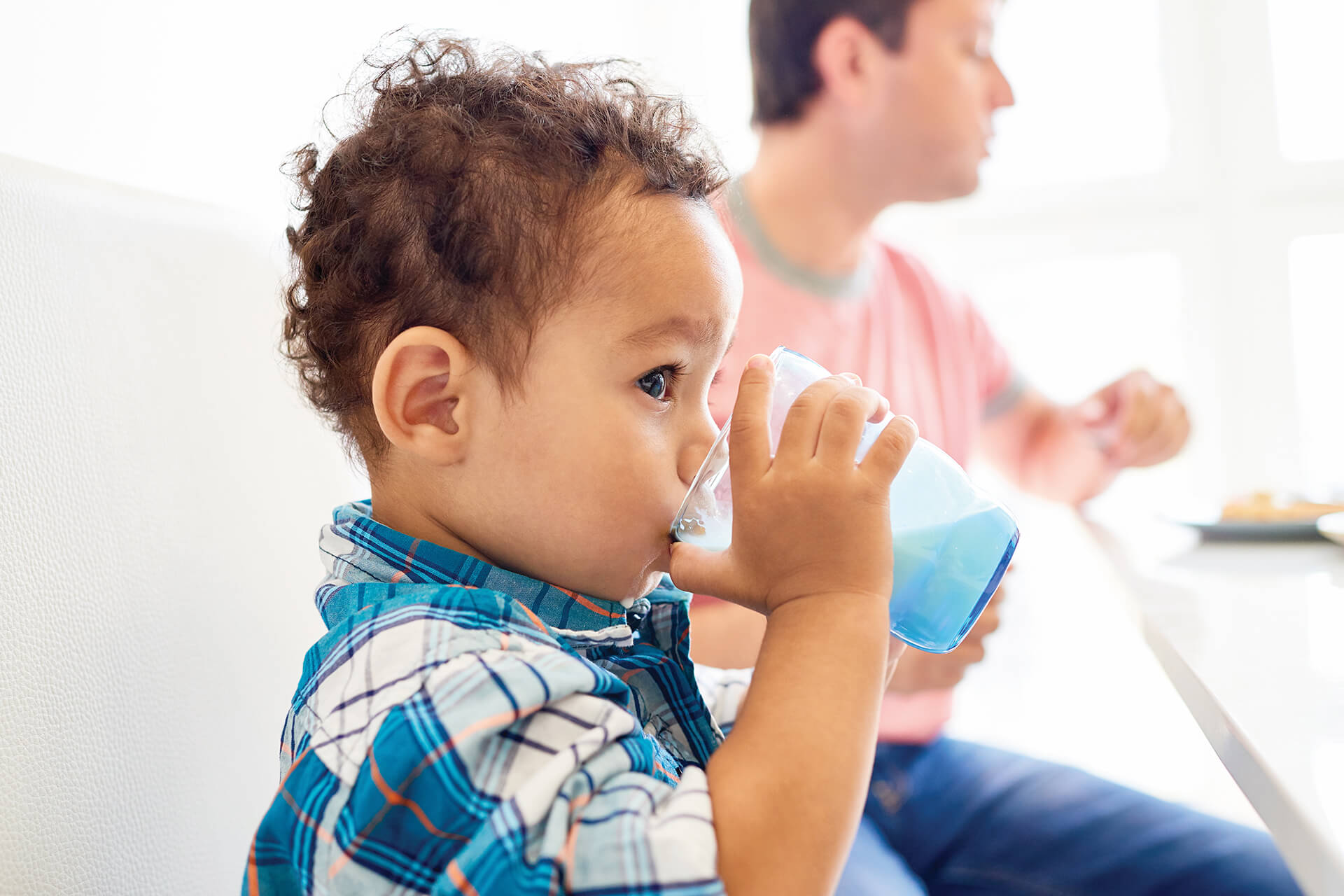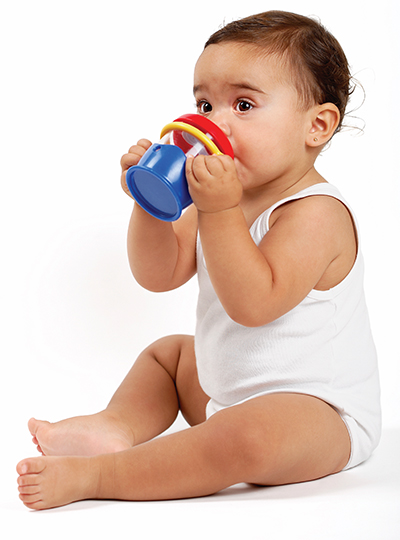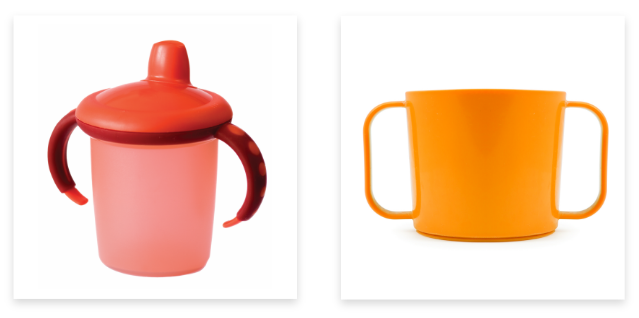
Time to Start Using a Cup
- Home
- Live Well Blog
- Time to Start Using a Cup
When your baby can sit up and is ready for it, it’s time to introduce a cup. This may seem like an exciting milestone, but it can sometimes be challenging. Babies are used to their bottle or breastfeeding, which not only provides nutrition but also comfort and soothing. So, transitioning to a cup is a gradual process that usually begins around 6-8 months and should be completed by 12-18 months.
Using a cup is important because prolonged bottle use can lead to dental problems, cavities, difficulties with chewing and eating, speech delays, ear infections, unhealthy eating habits, and obesity. It’s also harder to take away the bottle once the baby reaches 18 months and becomes more resistant to change. For breastfed babies, introducing the cup is equally important. You can continue to nurse your baby while gradually incorporating pumped breastmilk in the cup.

With so many cup options available, how do you choose?

Look for a lightweight cup with handles and a small opening. You don’t have to start with a sippy cup; an open cup is also a good choice. Babies usually develop the oral motor skills for using a straw around 12-18 months, but introducing one earlier can be helpful for practice. You may need to try different cups to find the one your baby prefers. Keep in mind that it will take some time for them to get used to the cup, so be patient and offer it several times.
Babies learn by watching, so let them observe you as you take a drink. Choose a time when your baby is awake, alert, and not too hungry to begin introducing the cup. At first, it’s all about learning and playing, so don’t expect them to drink much. For safety and to prevent choking, make sure they are sitting upright in a feeding chair when using the cup. Allow them to touch and play with an empty cup and explore the liquid on the tray. Let them bring the cup to their mouth for sensory exploration.
Start with small amounts of formula, breastmilk, or water in the cup. Watch and guide them as they learn to drink differently. They may cough initially as they adjust to the new method. Water may be harder to control because it is thinner. Avoid using juice, sugary drinks, or electrolyte drinks. Expect some mess as liquid may spill out of their mouth. Remember, using a cup doesn’t mean you have to stop breastfeeding or giving the bottle right away. It’s a gradual process.
Once your baby can drink well from the cup, offer it during mealtimes. Start replacing nursing or bottles one at a time, beginning in the middle of the day, then morning, and finally at bedtime. Avoid allowing your little one to walk around with a cup. Keep cups on the counter or table so they can ask for a drink when needed. Carrying the cup around often leads to messes and may cause them to fill up on milk and eat less during mealtimes.
